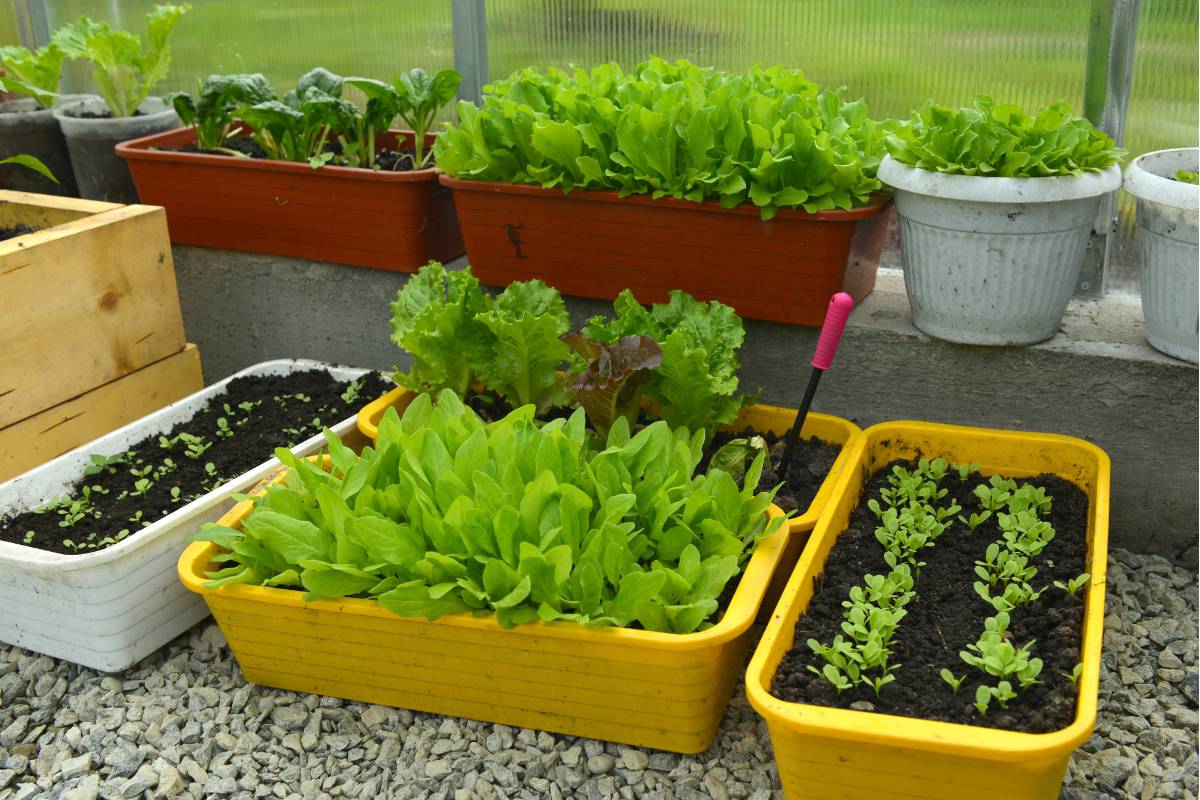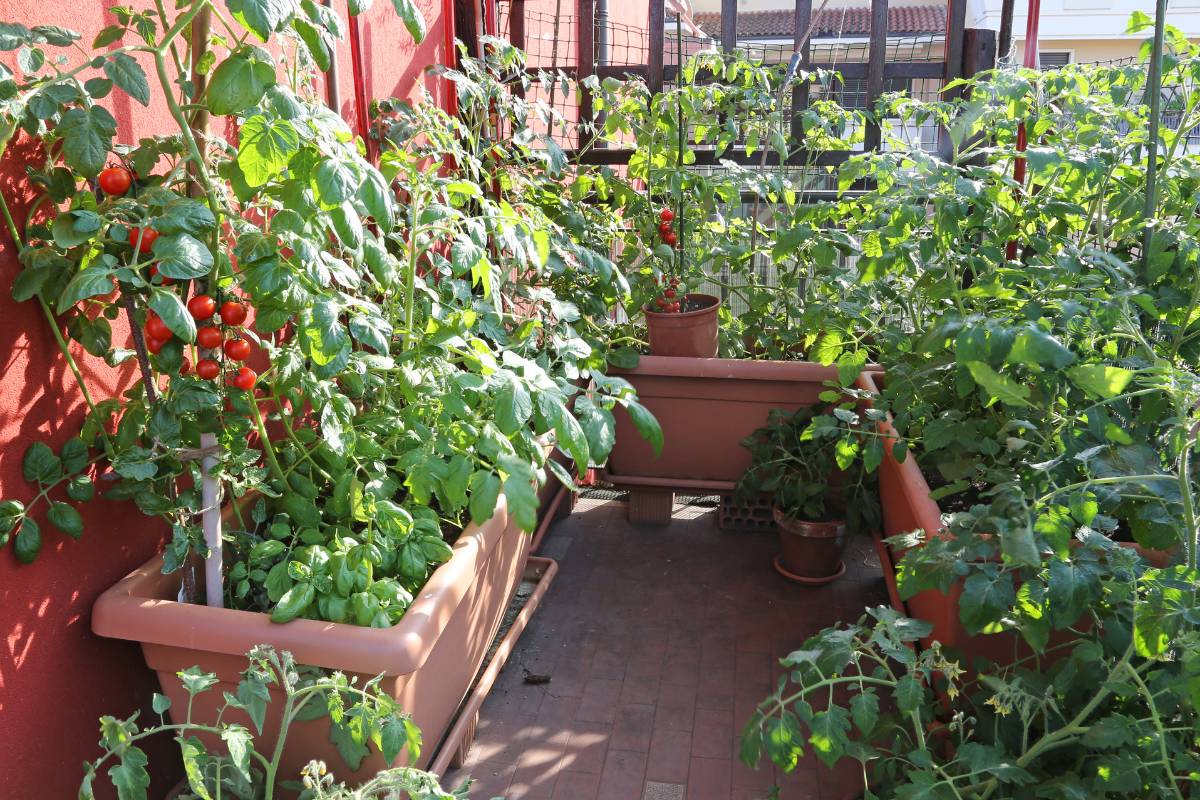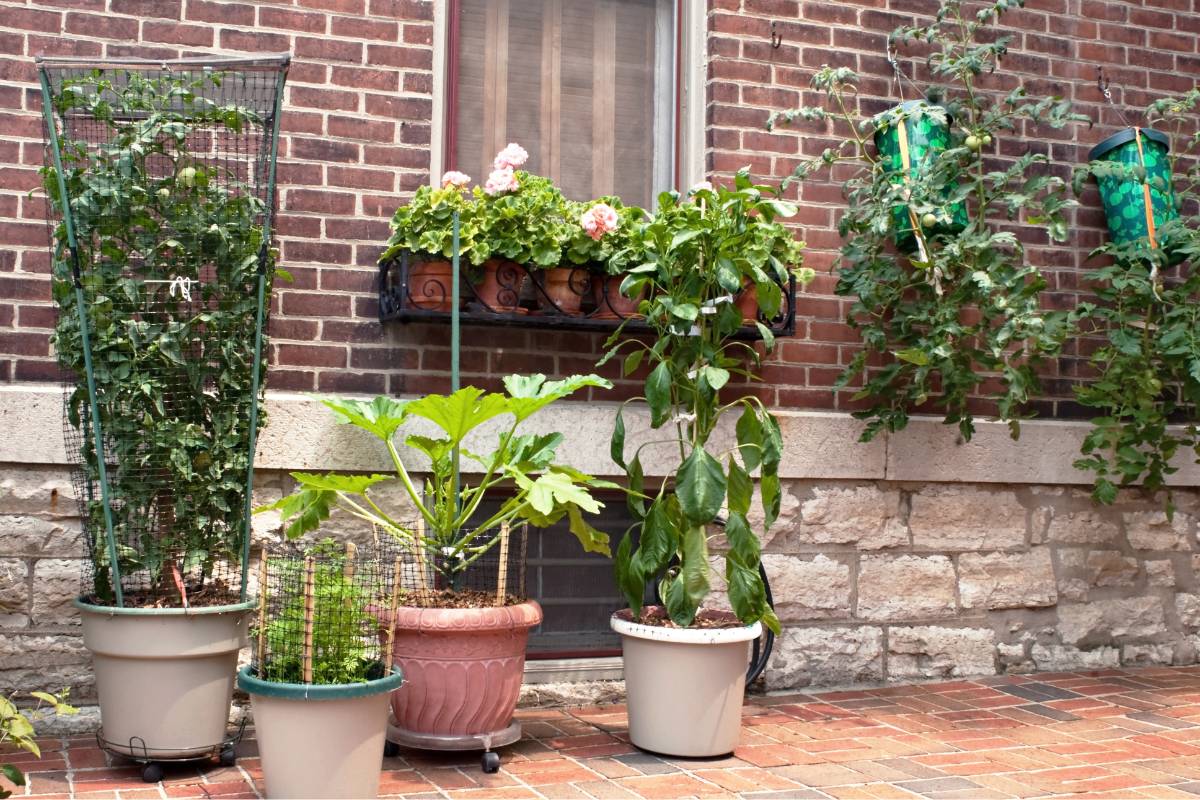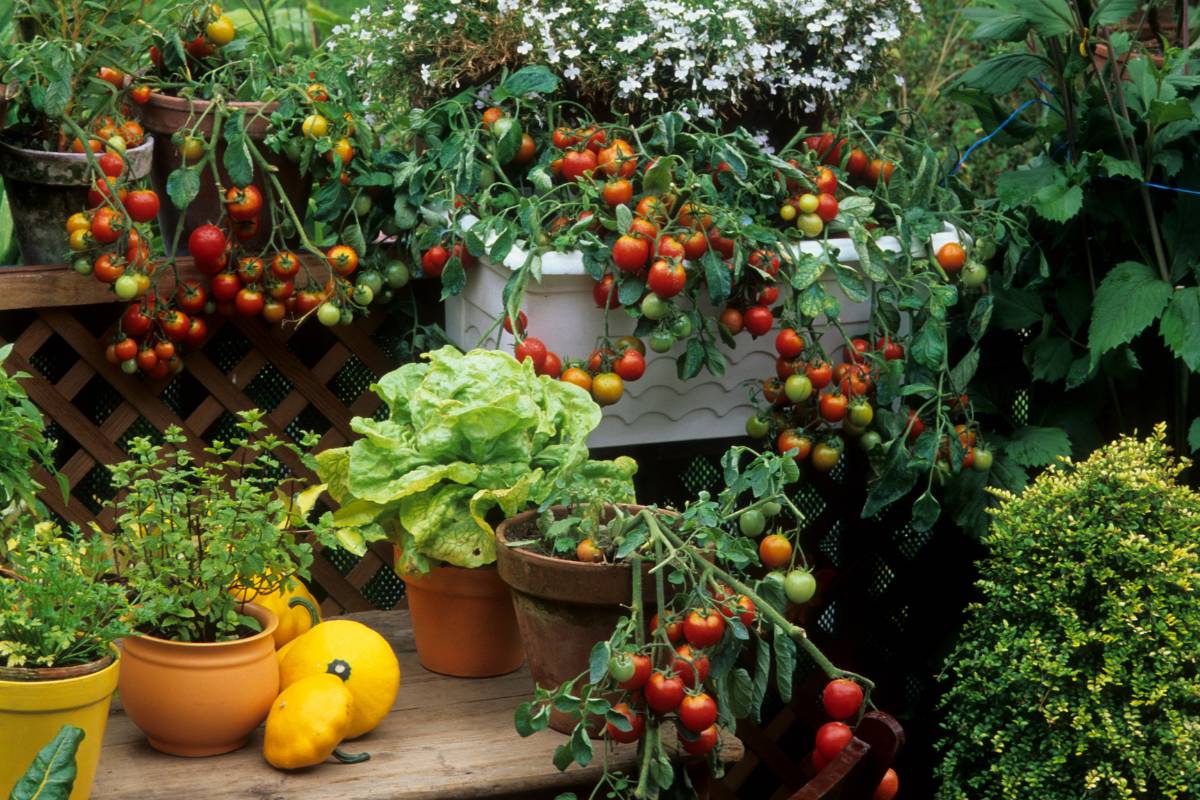If you're keen on growing your own vegetables but don't have enough space for a traditional garden, fear not. Container vegetable gardening is very simple and the only things you will need are a sunny location, potting mix, containers and an even surface. It's possible to grow almost any vegetable in a container, so let’s get started.
Containers
Any container or pot of a reasonable size can be used as a vegetable planter as long as it drains well. The size of your containers will decide the vegetables that can be grown in them, but it's always wise to choose as large a container as possible. The larger the container, the more soil it can hold, and more soil means more water and nutrients available for your plants. Soil in smaller containers tends to get dry very easily and will require more frequent watering, and it can also heat up quickly in hot weather. Containers of at least 10 litres volume, or 25cm deep by 25cm across, are about the smallest size recommended for growing vegetables. Fabric grow bags are another good option as they drain well and promote healthy root growth.
Potting Mix
It's best not to use the soil from your garden in containers. Garden soil doesn’t drain as well as potting mix, meaning that the roots of your vegetables may rot. Garden soil may also contain unseen weed seeds that can germinate once the soil is dug and watered, and these will compete with your vegetables for water and nutrients.
The best soil mixture for vegetable container gardening is high-quality potting mix bearing the Australia Standards logo. Potting mixes specially formulated for growing vegetables are a good choice, and they often contain organic supplements and slow-release fertiliser both of which help to ensure healthy growth for your crops. Compost, aged manure and worm castings can all be added to your potting mix too.
Sunlight
You should find a sunny spot to place your containers, as most popular vegetables need direct sun for at least six hours every day for healthy growth. These plants will grow even better if they have eight to 10 hours of sunlight daily. If your space receives less than six hours of direct sun a day you’ll likely be limited to growing leafy greens and herbs.
In hot climates or if your growing space is exposed to a lot of hard surfaces and heat, plants will do well if they’re shaded during the heat of the afternoon in summer. It's also best to avoid dark-coloured or metal containers as they draw heat which can burn your plant's roots.
Support
Many vegetables will benefit from some support in the form of a trellis or stakes. Using supporting structures to grow vegetables vertically can also increase the amount you can grow. It’s a good idea to put supports in before you plant, so you don’t disturb your plants’ roots later. Climbing beans and peas, cucumbers, tomatoes and zucchini can all be grown up trellises or garden stakes.
Watering
Container plants are planted in a relatively small amount of soil and therefore can dry out very easily. Many vegetable plants require a lot of water to grow properly but also shouldn't be overwatered. It's important that the soil be kept evenly moist, but not drenched or waterlogged. If this seems like a delicate balancing act, don’t despair. It takes just a little experience for most gardeners to recognise the signs of over- or under watering.
Test the amount of moisture in your containers daily by sticking your finger into the top few centimetres of soil. If it's very moist, it doesn't need any more watering. If it's dry, you should water the soil until a little water runs out of the holes at the bottom of the container, ideally into a shallow saucer. In the warmest months of the year, you will probably need to water the plants at least once a day.
Feeding Your Plants
In addition to the nutrients used by your plants, watering your container vegetables will gradually wash nutrients from the soil. This leaching is a natural process that also happens in garden soils. Mulching with an organic mulch like lucerne or sugar cane, spreading a 5cm to 10cm layer of compost onto the soil or adding a slow-release fertiliser at the rate recommended for pots will replenish the nutrients between crops.
Vegetable plants need more intensive feeding than other plants because of their rapid growth. This is especially true when they’re grown in containers, as roots can’t spread out and search for nutrients as they would in the ground. Applying a small amount of liquid feed every few weeks can help vegetables to grow faster and stronger.
Vegetables for Container Gardening
Even though it is possible to grow almost any vegetable in a pot, not all vegetables are suited to growing in such close confines. For this reason, compact and small vegetable varieties need to be selected for your container vegetable garden. Vegetable plants that do well in containers include determinate tomatoes, potatoes, carrots, peas, zucchini, chilli and all sorts of leafy greens. Bush pumpkins, small varieties of cabbage, Asian greens and most herbs also thrive in containers.
Growing a flourishing container vegetable garden will allow you to enjoy a bounty of vegetables come harvest time. Try to expand your garden with every passing season while learning from your mistakes on the way. The fruits of your labour will be yours for the picking.









